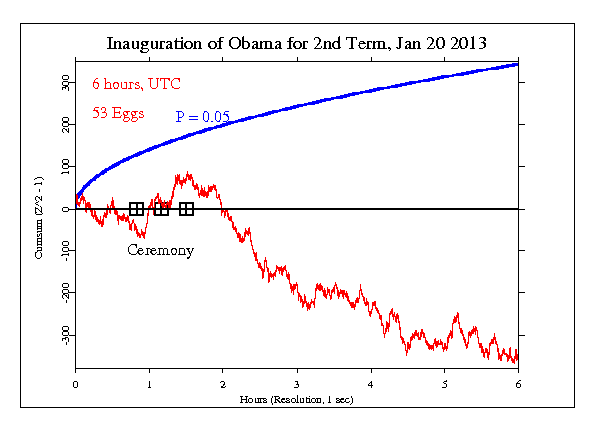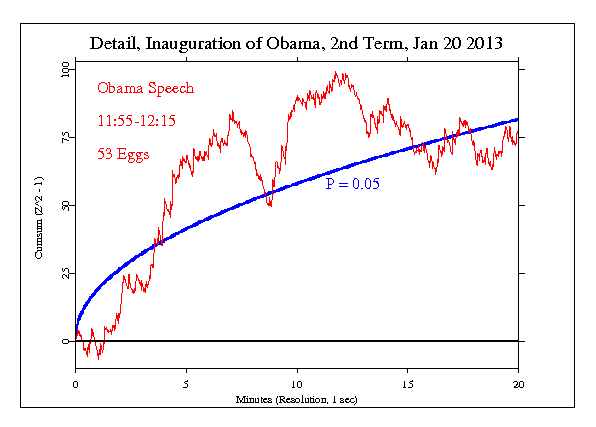Obama's 2nd Inauguration |
|
Obama's 2nd Inauguration was a joy to watch -- certainly for my wife and me. We both have great respect for his capabilities and his obvious moral qualities. I took notes while watching the live coverage, beginning about 11:00, and continuing through the Inauguration, his speech, the several other presentations, and the end of the ceremony.

The GCP event was set for 6 hours beginning at 11:00 ET. This included about 45 minutes of settling in. The ceremony itself began at about 11:51 with President Obama taking the Oath of Office administered by Chief Justice Roberts. The President then gave his Inauguration Address beginning at 11:55 and lasting for about 20 minutes. There were several other presentations, Invocations, music, poetry, and the ceremony ended around 12:30. The time of the Oath, the end of his speech and the end of the ceremony are marked in the figure below. The formal results is Chisquare 21264.827 on 21600 df, for p = 0.947 and Z = -1.618. Although the data show a positive trend during the ceremony, the overall trend is opposite to the standard GCP prediction. It is interesting to compare this outcome with that for the 1st Inauguration in 2009, which presents almost exactly the same image. (The formal period set for the 1st Inauguration was longer, but the presentation includes an exploration over a period similar to this one.)

The trend is strongly positive during Obama's Inauguration speech, which held many surprises to political observers. It was not generalities and flowing rhetoric, but listed precise objectives and challenges, and was in a word, progressive. In any case, the GCP data trend is positive and striking. This does not contribute to the formal experiment, but it does capture the flavor of the moment.

It is important to keep in mind that we have only a tiny statistical effect, so that it is always hard to distinguish signal from noise. This means that every "success" might be largely driven by chance, and every "null" might include a real signal overwhelmed by noise. In the long run, a real effect can be identified only by patiently accumulating replications of similar analyses.
|